You may have seen in your supermarket, sports store or online supplement shop a range of bars and gel products labelled 'energy'. These are in addition to the more traditional assortment of Protein bars that have been available for decades. How do energy bars differ and how should they be used? Find out which is the best energy bar for you.
More...
What are energy bars and gels?
Energy bars are snack bars that are designed to supply energy in the form of carbohydrate to help replenish the energy expended during exercise. The actual ingredients tend to vary, but most bars contain a mixture of cereals, dried fruits with added carbohydrate in the form of glucose, fructose, maltodextrins etc. Energy gels fulfil the same role, but the carbohydrate (normally from maltodextrin, rice syrup, or other poly saccharides) is supplied as a thick syrup solution, with a gel-like consistency. Unlike solid bars that are chewed, energy gels come in a small plastic or foil sachet with a tear off end, which allows the contents to be sucked out.
Why use energy bars and gels?
Carbohydrate is the body’s premium-grade fuel for vigorous exercise; when muscle stores of carbohydrate (glycogen) begin to run low, fatigue sets in and performance is compromised. The number one priority for anybody who exercises regularly therefore is to replenish lost carbohydrate in order to keep muscle stores of glycogen topped up. However, consuming high carbohydrate snacks and meals at the right time is not always possible (for example when travelling), which is where the convenience and portability of energy bars and gels is very useful. Moreover, well formulated bars and gels supply carbohydrate in a form that is readily absorbed and assimilated, and (particularly in the case of gels) which can be consumed during training to help prolong endurance.
Which is best - Bar or Gel, and how do I choose?
Like carbohydrate drinks, both buys and gels provide readily absorbed carbohydrate, but in a more portable form. You can think of bars as solid carbohydrate, drinks as liquid carbohydrate and gels as a kind of halfway house. Because of their semi-liquid form and lack of fibre or other ingredients, gels are emptied from the stomach more rapidly than bars, so are preferable for refuelling during exercise. The downside is that their high-tech formulation also means that per gram of carbohydrate, gels cost more than bars. bars on the other hand can make more of a conventional solid snack, so may be more enjoyable after training when they can be enjoyed with cuppa or used to top up between meals. Gels can also be used in this way, though some people find the gooey texture of a gel a little off-putting!
Who can benefit from energy bars and gels?
As we’ve already mentioned, replenishing lost carbohydrate is critical for maintaining performance, whether and the gym, on the sports field or for running, cycling, swimming, rowing and training and competition. However, there are particular instances where the use of bars and or gels can be beneficial:
Those who have to train more than once a day, when refuelling between workouts with conventional carbohydrate snacks and meals me not be possible;
Those with hectic lifestyles or work schedules who may not be able to plan carbohydrate- rich meals into their daily routines;
Those with slim, wiry physiques seeking to build muscle mass – adequate carbohydrate intake is essential to prevent the catabolism of muscle tissue for energy.
How to make the best energy bar or gel choice
Carbohydrate types
Look for a blend of carbohydrates (for example fructose, dextrose, maltodextrin, glucose polymers etc.), which will help to not only provide an immediate release of energy, but also to provide sustained energy levels and therefore avoid blood sugar peaks and troughs that can be produced when quick-releasing carbohydrates are ingested on their own
Electrolytes
Long workouts in warm conditions means sweats and lots of it! If you’re planning on using gels to replenish energy during your workouts, you may wish to consider those with added electrolyte minerals.
Added nutrients
In nature, all natural unrefined carbohydrates come complete with nutrients such as B vitamins and magnesium needed for their metabolism. If a significant proportion of your daily energy intake comes from energy bars and gels, those with added nutrients may be preferable
Flavour and texture
As is always the case it doesn’t matter how well-formulated a sports supplement product is, you need to ensure you like the taste and texture because if you don’t, it’ll just end up unused on the shelf gathering dust.
Best Energy Bar and Gel Comparison
Bar | Per 100g | Added Nutrients | Price | Main CHO Type | Flavours | |||
|---|---|---|---|---|---|---|---|---|
Calories | Protein | CHO | Fat | |||||
 SiS Go Energy Bar Mini | 344 | 11 | 63 | 5.3 | - | Oats, Rice, Real Fruit | Blueberry, Chocolate Fudge, Banana Fudge, Red Berry, Apple & Blackcurrant | |
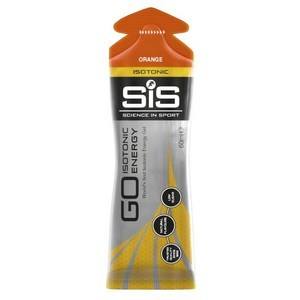 Sis Go Isotonic Energy Gel | 144 | 0 | 36 | 0.1 | - | Maltodextrin | Orange, Blackcurrant, Apple, Lemon & Lime, Pineapple, Pink Grapefruit, Fruit Salad, Vanilla | |
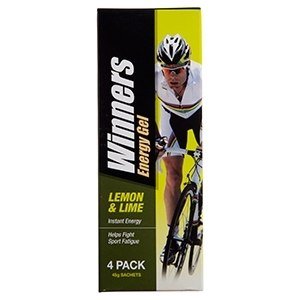 Winners Energy Gel | 263 | 0 | 66.2 | 0 | Electrolytes | Maltodextrin | Lemon & Lime, Espresso, Berry Burst | |
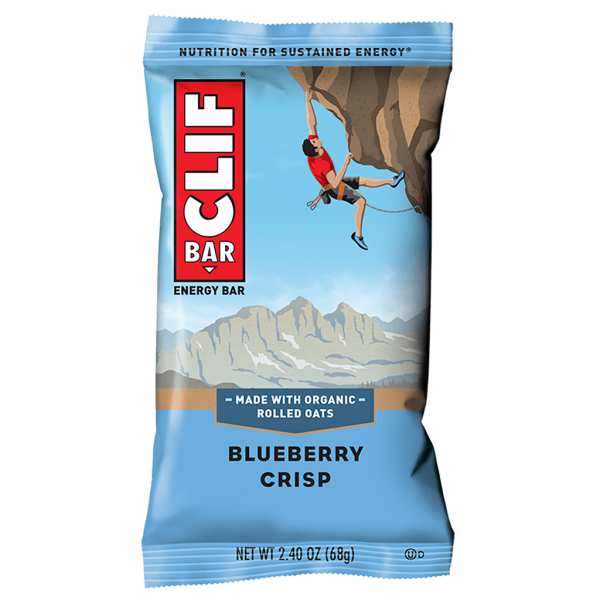 Clif Energy Bar | 378 | 15 | 60 | 10 | Electrolytes, vitamins & minerals | Rice, Oats, Soy, Barley | Peanut butter banana with dark chocolate, Sierra trail mix, Blueberry crisp. Cool mint chocolate, Coconut chocolate chip, Chocolate chip, Crunchy peanut butter, chocolate almond fudge, white chocolate macadamia | |
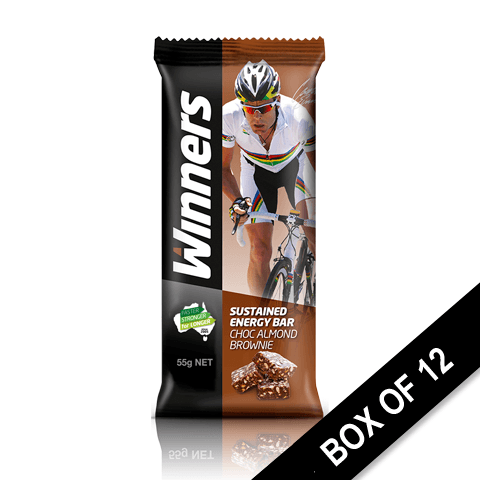 Winners Energy Bar | 354 | 5.9 | 67.4 | 5.4 | - | Rice, Oats, Wheat, Real Fruit | Choc Almond Fudge, Apple Berry Crumble, Sticky Date Pudding, Dark Choc Nuts & Sea Salt, Choc Mint Slice, Mountain Mix | |
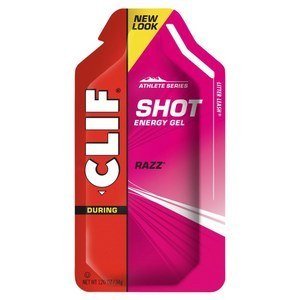 Clif Shot Energy Gel | 294 | 0 | 67.6 | 0 | Caffeine | Maltodextrin, Cane syrup, | Mocha, Chocolate, Citrus, Double Expresso, Razz | |
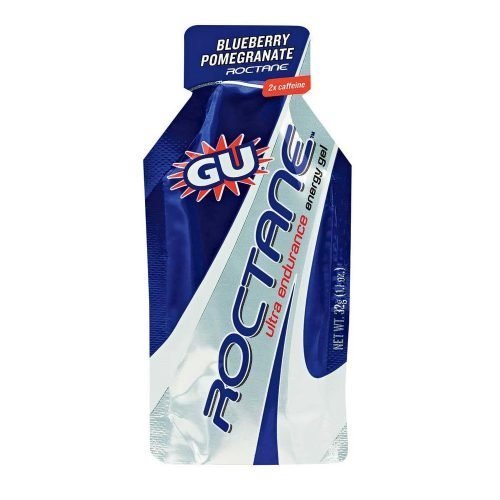 GU Roctane Energy Gel | 313 | - | 65.6 | - | Electrolytes, BCAAs | Maltodextrin, Fructose | Blueberry pomegranate, Vanilla orange, Pineapple, Cherry Lime, Strawberry Kiwi, Lemonade | |
 Horleys Replace Gel | 268 | 0 | 65.8 | 0 | Electrolytes | Raspberry | ||
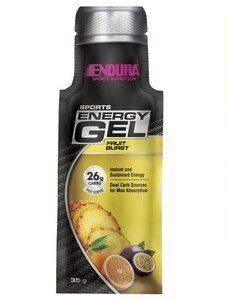 Endura Sports Energy Gel | 362 | 0 | 99 | 0 | Electrolytes, Caffeine | Maltodextrin, Fructose | Green Apple, Zesty Lime, Wild Melon, Vanilla, Coffee, Grape, Cola Kick, Fruit Burst, Salted Caramel, Raspberry, Citrus | |
To sum up
So there you have it. A quick run down of what energy bars are, what they do and what to look out for. If you have a nagging nutrition question, or would like to suggest a review of other products on the market you can get in touch here.

Great Post. Keep it up.
I've shown you your writing skills and your blog looks great. Is this a paid theme or did you edit it yourself? Ayyyy keep going with good quality. Reading a good book.